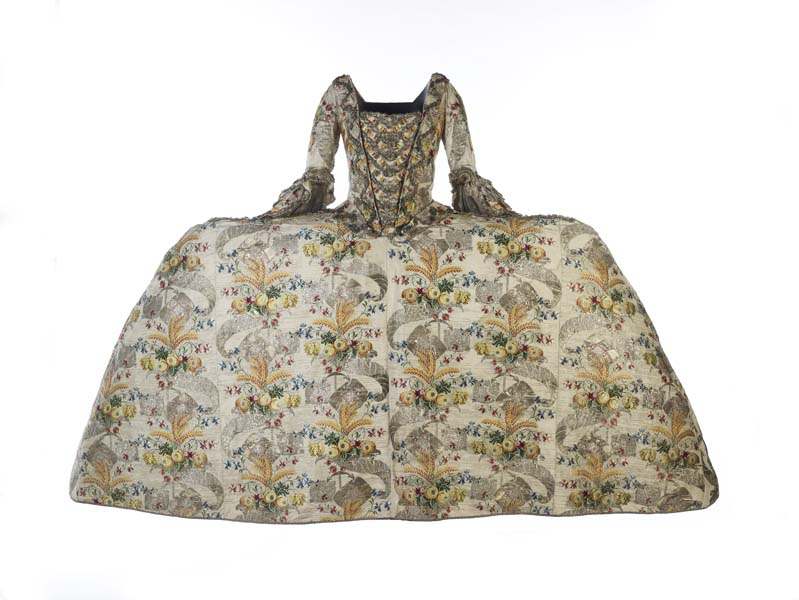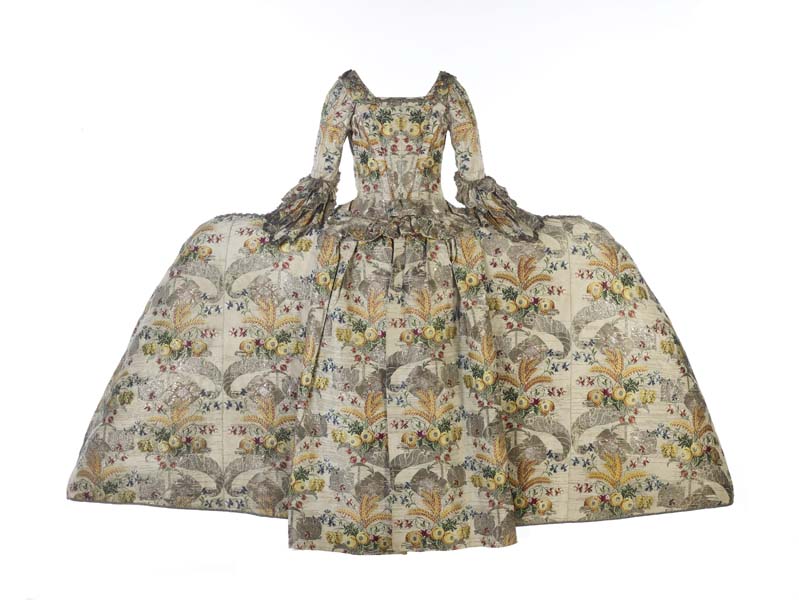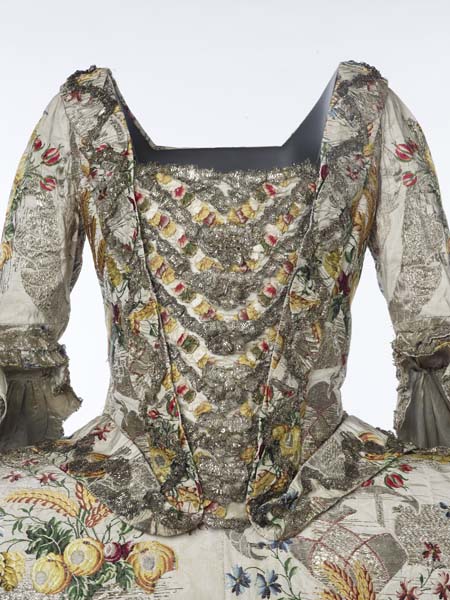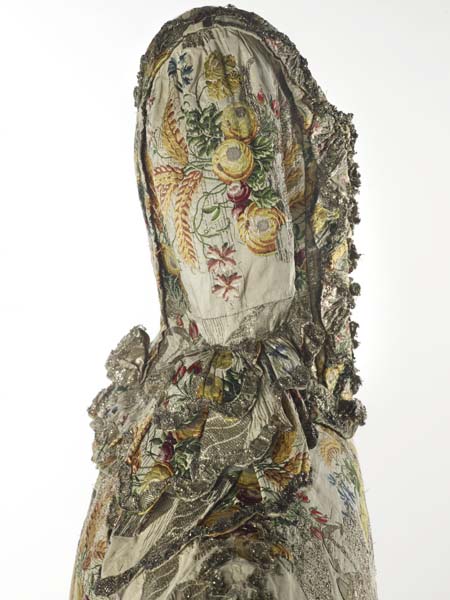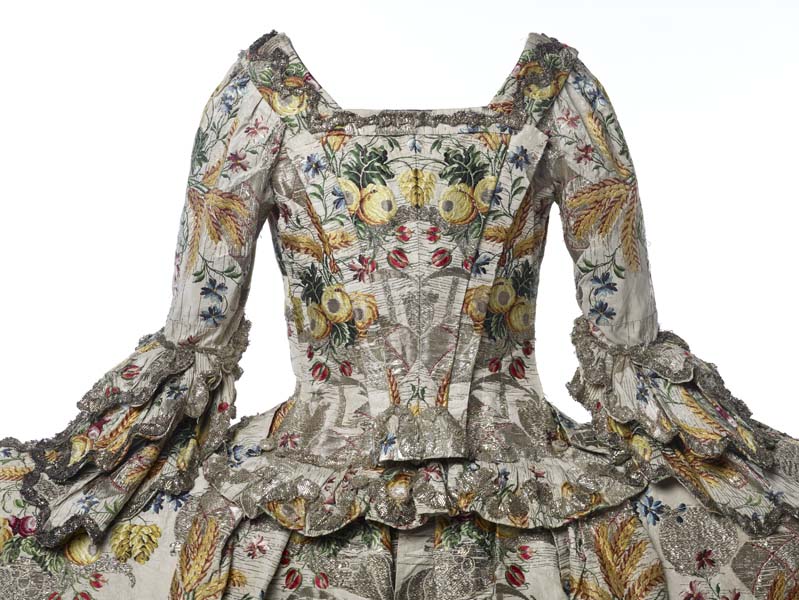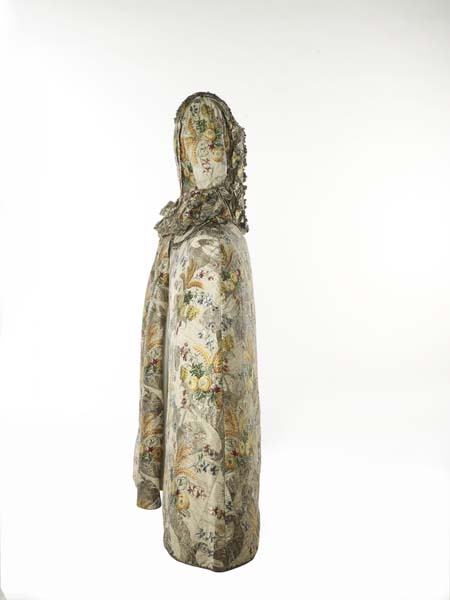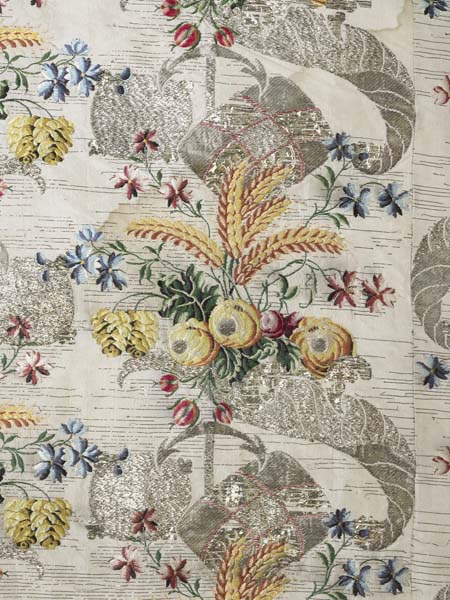Ann Fanshaw’s Mantua
1752-53
Made for Ann Fanshaw in 1751-52. The Museum of London has this amazing Mantua as part of their display and they have some wonderful photo’s of it in their Online Collection (click here for link!) From what we can gather Mantua’s were a style of dress linked to the 1600’s and were still being worn in the early 1700’s in general wear – Pastime Pleasures, who do the costumes for Hampton Court Palace, did an excellent collection of paper versions in a display they made for the Eighteenth Century section of the Hampton Palace. They moved from general wear or ‘Day Wear’ or ‘Undress’ to lingering only in Court wear. This fashion for mantua’s as high fashion evidently clung on well into the 1750’s which is evident in Ann Fanshaw having this dress made for her. We have a page set up for the brief history of the Mantua so if you wanted to take a look or are interested in learning more then please click here. You can see here from this above image the typical detail of the skirts of the mantua sweeping fashionably over the hips and remaining and falling at the back part of the dress. The dress here has robings (the folds of fabric that run down the front edge of the outer bodice) which are laid over an embellished stomacher of the same metallic lace as the dress. As far as our understanding of embroidery goes, this dress isn’t embroidered but is a woven pattern, rich with flowers and feathers and close repeated pattern. From this Side View Image you can clearly see the narrowness of the dress. This wasn’t a feature of the original mantua but shows the blend between mid 18thc fashions and this earlier form of dress.We’ll admit; the more we look into the eighteenth century the less we seem to be able to pin anything down as to exact details, but our general understanding is that mantuas weren’t ever sacks but seemed to be of the ‘Anglais style’.
This particular dress features the sewn-down pleats of the ‘anglais’ (as in the sewn down pleats that decorate the CB) and it appears, from this photo atleast, as if it’s been cut off and doesn’t go into the skirt. This may just be the photo. We’ve not really seen this in other Mantua’s – in the above photo it almost appears like it’s a jacket style bodice. We’ve also seen this ‘frill’, if you can call it that, draped around the back – there’s a dress in the Bath collection that has it and it was sewn on top and not part of the dress. Again, we’ve included it in our ‘Mantua Page’.
In the above image you can see this frill and how it’s attached covered by the silver trim. There is also a button, which for this period and because of it’s placing, does tend to be functional – possibly for pinning up the train. The ruffles, also pictured here have a slimmer version of the trim that runs along the bouncy and deep curves of those frills.
This image here is the long side view and again, it’s slimness is so noticeable. The petticoat seems to be cut neatly to the under hoops and has no gathers or pleats. You can see at the back that there is this extra bit hanging down and this would be the characteristic back skirt of the Mantua. See how the bodice is almost fuller and broader than the skirt.
Some of the dressmakers take such care at the fold pattern at the back of the sewn down pleats – they’ve done it beautifully! Using the pattern repeat and the match of the pleats is a useful way to see how the CB panel was cut and how much fabric was tucked in under those pleats. The fact that the pattern isn’t a mirror image design on the same line of the fabric means that to get the effect that they have achieved, they must have seamed the CB and dropped one side of the back panel down to the next line of pattern. This proof of the back panel having been cut means that for the CB pleat atleast we can’t guess at what the pleat allowance is but for the others we can. The blue flower meeting the yellow rose appears to be only a matter of inches – perhaps 4″. The red flower to red berry is about the same, adding a bit for the curve and showing the slight, usual curve that was cut into the anglais pleats. The yellow flower butting up against the other yellow is a mere matter of inches.
Here in the above image is a clear shot of the design sprig and wave of the weave. The metallic threads in this were likely to be silver and geniune – the lace aswell, is probably real silver.

